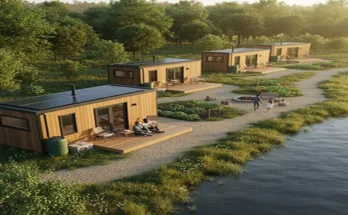Real estate wholesaling is often touted as a way to profit from property without needing substantial capital or credit, making it an ideal entry point for beginners. Essentially, a wholesaler acts as a middleman, securing a contract on a property and then immediately assigning that contract to an end buyer (usually a cash investor) for a fee.
A successful wholesaling business doesn’t require complex assets; it requires a disciplined, step-by-step plan focused on lead generation, relationship building, and execution.
Here is a comprehensive low-capital real estate wholesaling business plan for beginners.
Phase 1: Preparation and Foundations (The Zero-Cost Start)
The initial phase focuses on knowledge acquisition and legal protection, minimizing upfront financial risk.
1. Education and Local Market Mastery
- Understand the Legal Landscape: Wholesaling involves contracting, which is legally sensitive. Research your local and state laws regarding assignment of contract and whether you need a real estate license to legally market properties. This step is non-negotiable.
- Identify Your Target Market: Focus on a small, specific geographic area (e.g., a few ZIP codes). Know the average price of distressed properties, the estimated renovation costs, and the final “After Repair Value” (ARV).
- Master the Math: Your profit depends on the Maximum Allowable Offer (MAO). Use the investor formula:
MAO=ARV×(1−Investor’s Target ROI)−Repair Costs−Your Wholesaling Fee
A common rule is the 70% Rule (investors want to pay no more than 70% of the ARV, minus repair costs).
2. Legal Entity and Core Documents
- Establish a Simple Business Structure: Start with a simple DBA (“Doing Business As”) or form a Single-Member LLC for legal and liability protection. The cost is generally low and can often be filed online.
- Draft Contracts: Obtain templates for your two critical documents: the Purchase and Sale Agreement (between you and the seller) and the Assignment of Contract (between you and the cash buyer). Have an attorney review these.
- Open a Business Bank Account: Keep business finances separate from personal ones for clarity and professionalism.
Phase 2: Lead Generation and Relationship Building
This phase requires minimal money but significant time investment.
3. Build Your Buyer’s List (Cash is King)
Your low-capital strategy relies on a ready list of cash buyers, as they eliminate financing delays.
- Find Local Investors: Drive around your target area and look for homes with “We Buy Houses” signs, renovated properties, or houses under construction. Contact the owners/contractors.
- Use Public Records: Search county records for recent cash transactions. Cross-reference the names with local LLC filings or public tax records to find active investors.
- Attend Local REIAs: Join local Real Estate Investor Associations. This networking is free and gives you direct access to your end buyers.
4. Low-Cost Seller Lead Generation
Targeting motivated sellers is the key to getting properties at a deep discount.
- “Driving for Dollars”: The best zero-cost strategy. Drive your target area, identify “ugly” or distressed properties (overgrown yards, boarded windows, deferred maintenance), and write down the addresses.
- Public Records Research: Access county records for properties with tax delinquency, pre-foreclosure filings, or vacant property registration (sometimes free, sometimes a small fee for data).
- Direct Mail (Low Volume): For the highly targeted leads you found (e.g., tax delinquent lists), send personalized, hand-written letters instead of mass postcards. This is highly effective and limits postage costs.
Phase 3: Negotiation and Deal Execution
This is where you bring the pieces together and earn your fee.
5. Analyze and Negotiate the Deal
- Confirm the Discount: When speaking with the motivated seller, determine their pain point (why they need to sell fast) and ensure the agreed-upon price adheres to your MAO calculation.
- Present Your Contract: Use your Purchase and Sale Agreement. The key low-capital element is the Earnest Money Deposit (EMD). Since you’re using minimal capital, make the EMD as low as possible and state that it is fully refundable if you cannot find a buyer within the contract period.
6. Execute the Assignment
- Market to Your Buyers’ List: As soon as the contract is signed, send a detailed email to your cash buyers’ list. Include the address, a detailed repair estimate, a photo, and the assignment price.
- Assign the Contract: Once a buyer agrees to the price, you sign the Assignment of Contract with them. They pay your Assignment Fee (your profit) and step into your shoes to close the deal with the original seller.
- Closing: The investor closes the deal with the original seller, and you walk away with your fee. You never actually own the property.
Profitability and Scaling
By focusing on a disciplined, low-cost approach to marketing (driving for dollars, networking, targeted direct mail), a beginner can execute their first deal with just a few hundred dollars in costs (LLC filing, attorney review, EMD).
Once your first few assignment fees are collected, you can reinvest that capital into scaling your business: investing in a better list-generating software, larger-scale direct mail campaigns, or even simple PPC (Pay-Per-Click) advertising for buyer leads. The foundational low-capital work provides the fuel for future expansion.





